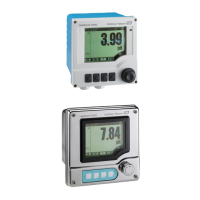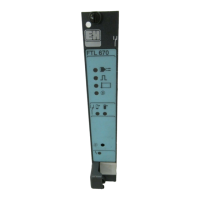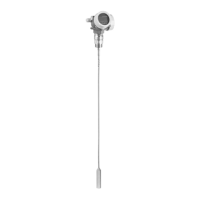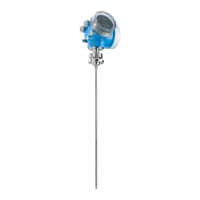Liquiline System CA80SI Commissioning
Endress+Hauser 51
If you wish to configure your most important input and output parameters in the Basic
setup analyzer :
‣
Configure the current inputs, relays, limit switches, cleaning cycles and device
diagnostics with the following submenus.
10.4.2 Configuring the sample flow
1. Open any shut-off valves that may be present in the sample supply lines. From this
step onwards, there must be sample present at the sample channel switching filter.
The recommended range is: 1.5 to 3 bar (21.8 to 43.5 psi) .
2. Configure the sample flow on the flow controller and check via the Systemtest menu:
(Menu/Diagnostics/Systemtest/Analyzer/Sample channel). Recommendation: 70
ml/min.
3. Select the relevant sample channel via Test channel and press Confirm to activate.
4. Recommendation: Do not configure the next sample channel until the sample flow
has been stable for several minutes.
5. Once the sample flow is configured for all channels, select and activate the None
sample channel to close all valves. If the channel is deactivated, sample continues to
flow through each channel and is diverted via sample outlet hose "D".
10.4.3 Connecting the reagents and standard
1. Insert reagents and standard with bottle tray.
2. Connect reagent hoses to the relevant valves.
3. Connect the standard to the inlet in the hose pump.
4. Menu/Operation Select /Maintenance/Bottle change mode/Bottle insertion/
Bottle selection .
5. Select all of the bottles you have inserted and confirm with OK .
6. The device is now ready to measure. At the start of the initial measurement, the
reagent dispensers are inflated completely and emptied. This is to guarantee the
measuring performance from the start, and occurs after commissioning, after
replacing the reagent bottles or after certain diagnostic cases.
10.5 Function check
L
WARNING
Incorrect connection, incorrect supply voltage
Safety risks for staff and device malfunctions!
‣
Check that all connections have been established correctly in accordance with the
wiring diagram.
‣
Ensure that the supply voltage matches the voltage indicated on the nameplate.
• After mounting, check all the connections to ensure they are secure and leak-tight.
• Visually inspect all the hose connections to ensure everything is correct.
L
WARNING
Connection errors
The safety of people and of the measuring point is under threat. The manufacturer does
not accept any responsibility for errors that result from failure to comply with the
instructions in this manual.
‣
Put the device into operation only if you can answer yes to all the following questions.
Instrument status and specifications
‣
Are the hoses free from damage on the outside?
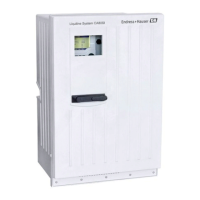
